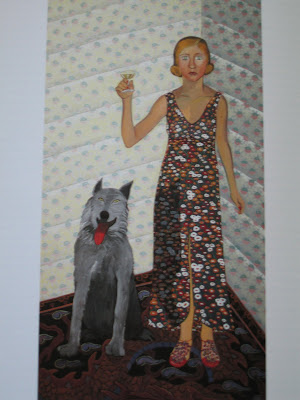
(1868-1940). French painter, draughtsman, designer, and lithographer. In the 1890's he was a member of the Nabis and at this time painted intimate interiors and scenes from
Montmartre, his sensitive patterning of flattish colors owing something to
Gauguin and something to
Puvis de Chavannes, but creating a distinctive manner of his own. He also designed posters and theatrical sets. From about 1900 he turned to a more naturalistic style and with
Bonnard became the main practitioner of
Intimisme, making use of the camera to capture fleeting, informal groupings of his friends and relatives in their homes and gardens. He had several close female friends and preferred painting women and children to men. His work also included landscapes and portraits. Although he was financially successful, he lived modestly, sharing an apartment with his widowed mother until her death in 1928; she often features in his paintings. He was reserved and quiet in personality, although affectionate and much liked. For many years he kept a detailed journal in which he revealed his thoughtful attitude towards art and life. (Ian Chilvers)
 The 1st Car, 1971
The 1st Car, 1971 The Birthday Party, 1971.
The Birthday Party, 1971. Portrait of a Dog, 1971
Portrait of a Dog, 1971






















